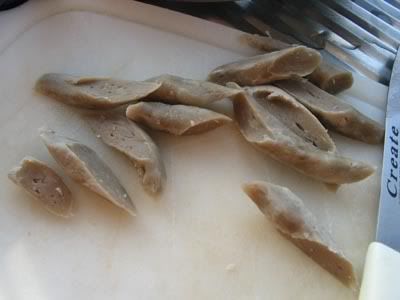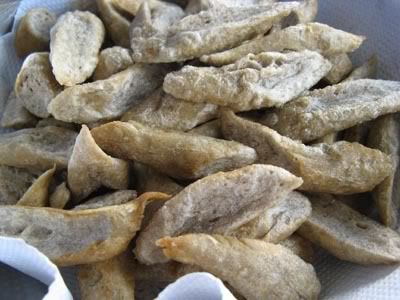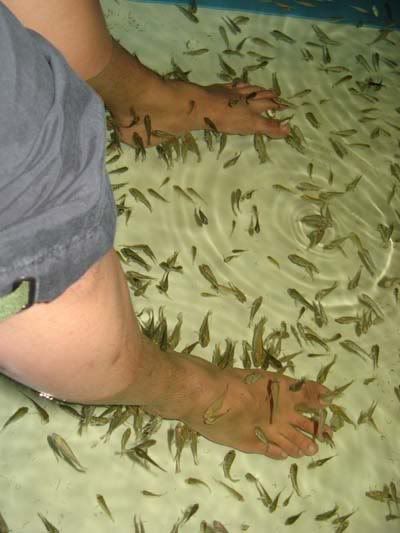HAPPY 51ST BIRTHDAY MALAYA!
Malaya was formed on 31st August 1957
Malaysia was formed on 16th September 1963
football & my life!
HAPPY 51ST BIRTHDAY MALAYA!
FOOTBALL: CHAMPIONS LEAGUE 2008/2009 DRAW
FOOTBALL: WHY SHEVA DID NOT PERFORM AT CHELSEA?
ANDY LAU WONDERFUL WORLD TOUR 2008
STAND UP COMICS' FUNNIEST LINES
FOOTBALL: SUPERCOPA WEEKEND
WALL·E
KEROPOK LEKOR














CHELSEA AND LEE CHONG WEI
MOTHER OF ALL BY-ELECTIONS IN MALAYSIA
Poling Day:
237 WEEKS
FOOTBALL: THE BEAST LEAVES
PHOTOSYNTH
OLYMPICS GIRL'S FAKE VOICE
OLYMPICS OPENING CEREMONY NOT FULLY 'LIVE'
PARAMETRIC MODELING
USD130 TO USD115 A BARREL
INVISIBILITY CLOAK
Both are so-called metamaterials -- artificially engineered structures that have properties not seen in nature, such as negative refractive index.
The two teams were working separately under the direction of Xiang Zhang of the Nanoscale Science and Engineering Center at the University of California, Berkeley with U.S. government funding. One team reported its findings in the journal Science and the other in the journal Nature.
Each new material works to reverse light in limited wavelengths, so no one will be using them to hide buildings from satellites, said Jason Valentine, who worked on one of the projects.
"We are not actually cloaking anything," Valentine said in a telephone interview. "I don't think we have to worry about invisible people walking around any time soon. To be honest, we are just at the beginning of doing anything like that."
Valentine's team made a material that affects light near the visible spectrum, in a region used in fiber optics.
"In naturally occurring material, the index of refraction, a measure of how light bends in a medium, is positive," he said.
"When you see a fish in the water, the fish will appear to be in front of the position it really is. Or if you put a stick in the water, the stick seems to bend away from you."
These are illusions caused by the light bending when it moves between water and air.
NEGATIVE REFRACTION
The negative refraction achieved by the teams at Berkeley would be different.
"Instead of the fish appearing to be slightly ahead of where it is in the water, it would actually appear to be above the water's surface," Valentine said. "It's kind of weird."
For a metamaterial to produce negative refraction, it must have a structural array smaller than the wavelength of the electromagnetic radiation being used. This was done using microwaves in 2006 by David Smith of Duke University in North Carolina and John Pendry of Imperial College London.
Visible light is harder. Some groups managed it with very thin layers, virtually only one atom thick, but these materials were not practical to work with and absorbed a great deal of the light directed at it.
"What we have done is taken that material and made it much thicker," Valentine said.
His team, whose work is reported in Nature, used stacked silver and metal dielectric layers stacked on top of each other and then punched through with holes. "We call it a fishnet," Valentine said.
The other team, reporting in Science, used an oxide template and grew silver nanowires inside porous aluminum oxide at tiny distances apart, smaller than the wavelength of visible light. This material refracts visible light.
Immediate applications might be superior optical devices, Valentine said -- perhaps a microscope that could see a living virus.
"However, cloaking may be something that this material could be used for in the future," he said. "You'd have to wrap whatever you wanted to cloak in the material. It would just send light around. By sending light around the object that is to be cloaked, you don't see it."
TimesOnlineResearchers funded by the Pentagon have managed to make material that has the potential to bend light around objects to make them invisible.
By diverting light around an object scientists expect to be able to make tanks, buildings and even individual infantrymen disappear from view.
For the military such a cloak would be the ultimate camouflage, but it would have many other uses, perhaps eventually allowing Harry Potter's invisibility cloak to be merchandised.
In tests carried out in the United States, researchers were able to construct a prism that bent light “the wrong way” and so would make an object appear to vanish. The results of the experiments by scientists at the University of California, Berkeley, and the Lawrence Berkeley National Laboratory, in California, will be published this week in the journals Nature and Science, but the full papers were released early online last night.
Similar techniques using microwaves, which are much easier to control, were demonstrated two years ago, but this is the first time that they have been successfully carried out in three dimensions with visible light.
“This straightforward and elegant demonstration enhances our ability to mould and harness light at will,” researchers said. “Invisibility cloaks get a step closer to realisation, with the demonstration of a new material that can bend visible light the wrong way for the first time in three dimensions.”
The prism used to bend the light was made from metamaterials, substances artificially created using nano-engineering, which refracted it in the opposite direction from the way that it would through a glass prism.
Bending light in the wrong way, negative refraction, is thought to be impossible with naturally occurring materials but the metamaterials, which had a fishnet structure made from silver nanowires, overcame the problem.
Researchers believe that the technique can now be developed to create an invisibility cloak that would direct light waves around an object. To the observer the effect of diverting light around an object would be to hide it because none of the light would reflect off it to give away its position.
The scientists were reassured that little of the light was lost during the process of bending, meaning that high definition would be maintained. This would be important for the development of an invisibility cloak because a fuzzy appearance to a landscape would give away to an observer that something was being hidden.The researchers believe that the technology employed could be used to develop the “perfect lens”, which would be able to reveal objects that are smaller than the wavelength of light.
The experiments are a development of work by Sir John Pendry, Professor of Theoretical Physics at Imperial College, London, who originally outlined how metamaterials could be constructed to cloak objects by deflecting and controlling radiation. He said that in the short to medium term the most likely application of a cloaking device would be to hide objects such as aircraft and tanks from radar.
Fact panel: Missing in action
— A “cap of invisibility” was used by several Greek figures, including Athena and Hermes, to hide from supernatural beings
— In The Republic, by Plato, Gyges finds a ring that renders him invisible. He uses it to enter the royal court, seduce the queen and kill the king
— The Invisible Woman is a Marvel Comic character. Susan Storm Richards is exposed to a cosmic storm, which endows her with the ability to bend lightwaves
— In H. G. Wells's The Invisible Man, Griffin, a scientist, manages to change his body's refractive index to match air and becomes invisible
AYAKA (飯田 絢香 Iida Ayaka)
NUBIAN GOAT'S MILK








Nice taste. Yummy! Too expensive for me to consume this on a regular basis. I will go broke because of goat's milk.
HAPPY 43TH BIRTHDAY SINGAPORE!
RELAX FISH SPA





FOOTBALL: LEGENDARY SIR BOBBY WILL DIE 'SOONER RATHER THAN LATER'
FOOTBALL: NO TRANSFER!
RISE AND FALL, RAGE AND GRACE

GAPMINDER
8.8.8.8.
There is also a resemblance between two digits, "88", and the shuang xi ('double joy'), a popular decorative design composed of two stylized characters 喜 (xi, 'joy', 'happiness').
The many issues encountered before the games is really making this Olympic Games into more than just a sport event. The terrorist threats, the pollutions, the Sichuan earthquake, the Great FireWall of China to cut down on press freedom, the Xinjiang, Tibet and Falun Gong are all the problems and potential problems faced before the games. Hopefully, everything will settle down nicely when the real events take place.
Designed to express the playful qualities of five little children who form an intimate circle of friends, Fuwa also embody the natural characteristics of four of China's most popular animals -- the Fish, the Panda, the Tibetan Antelope, the Swallow -- and the Olympic Flame.
Each of Fuwa has a rhyming two-syllable name -- a traditional way of expressing affection for children in China. Beibei is the Fish, Jingjing is the Panda, Huanhuan is the Olympic Flame, Yingying is the Tibetan Antelope and Nini is the Swallow.
When you put their names together -- Bei Jing Huan Ying Ni -- they say "Welcome to Beijing," offering a warm invitation that reflects the mission of Fuwa as young ambassadors for the Olympic Games.
Fuwa also embody both the landscape and the dreams and aspirations of people from every part of the vast country of China. In their origins and their headpieces, you can see the five elements of nature -- the sea, forest, fire, earth and sky -- all stylistically rendered in ways that represent the deep traditional influences of Chinese folk art and ornamentation."
I like the ONE WORLD ONE DREAM as the main theme for the Games.
BBQ CHICKEN



















